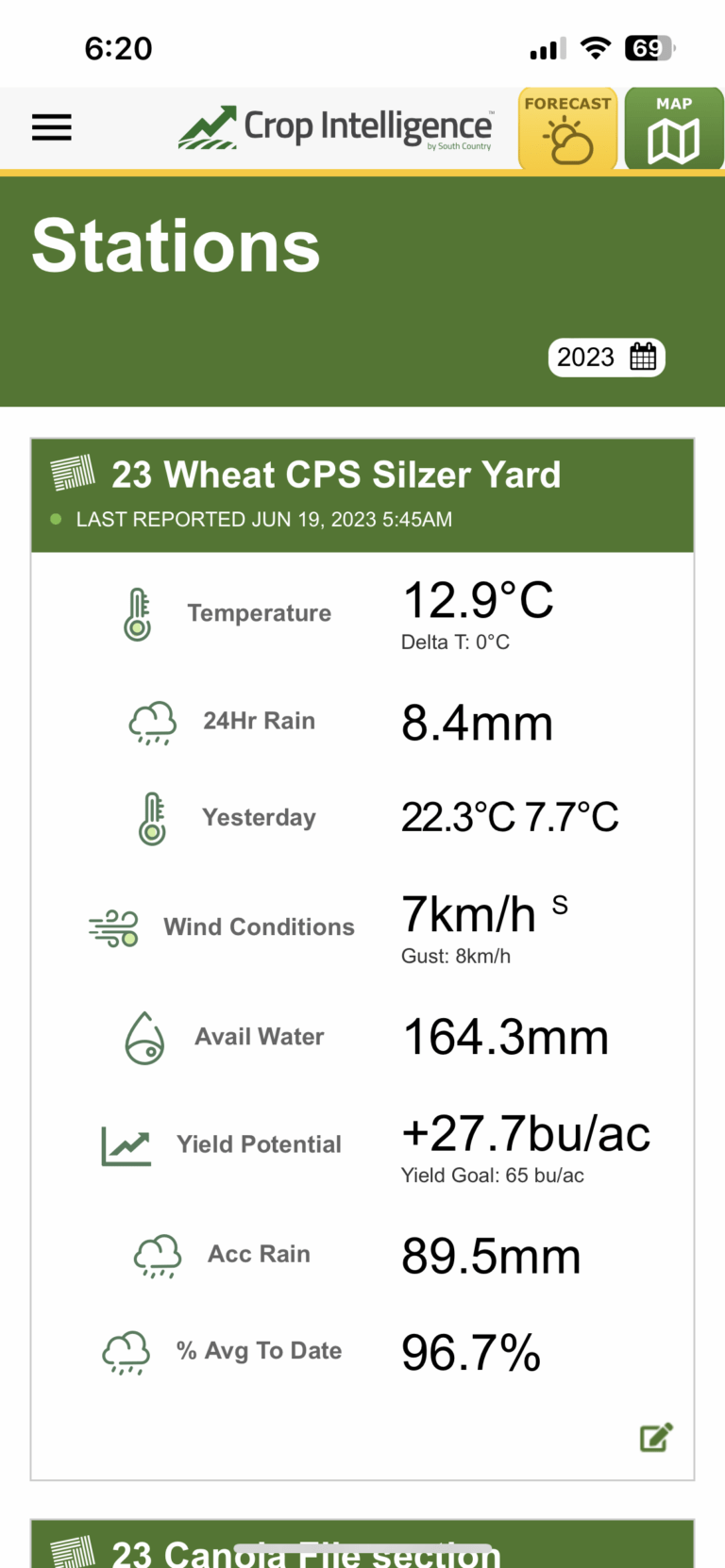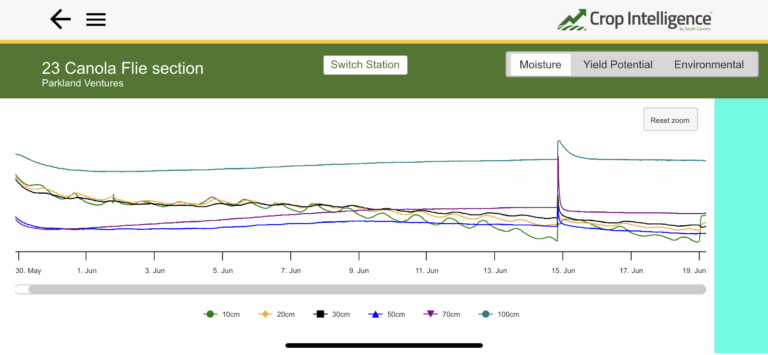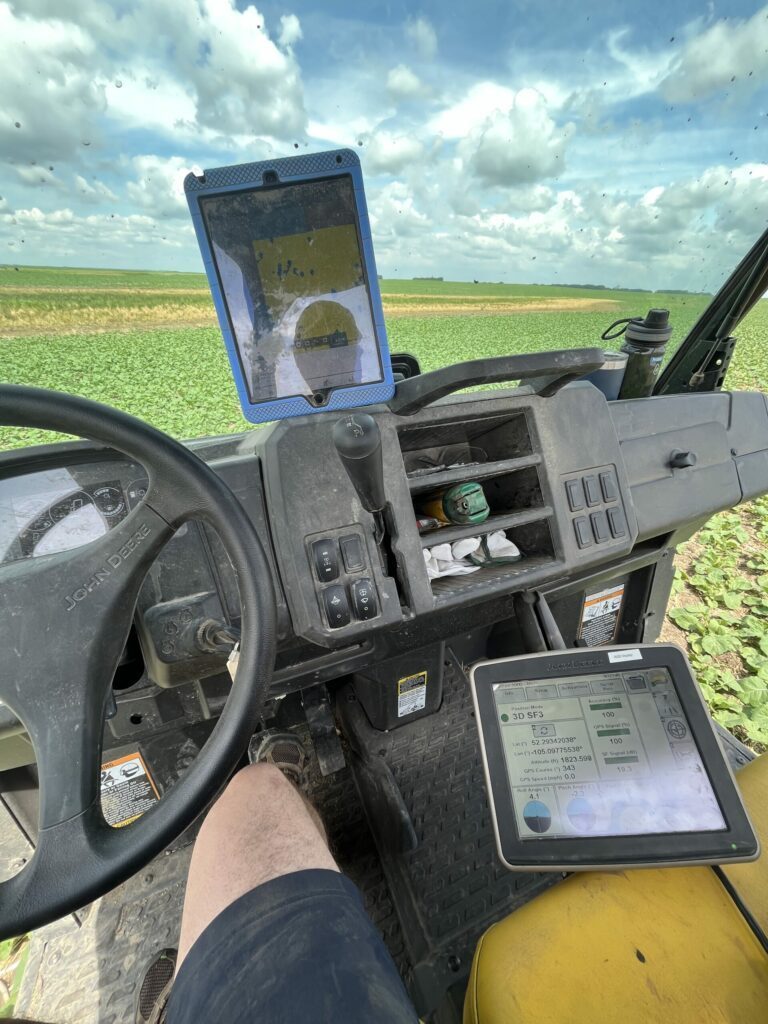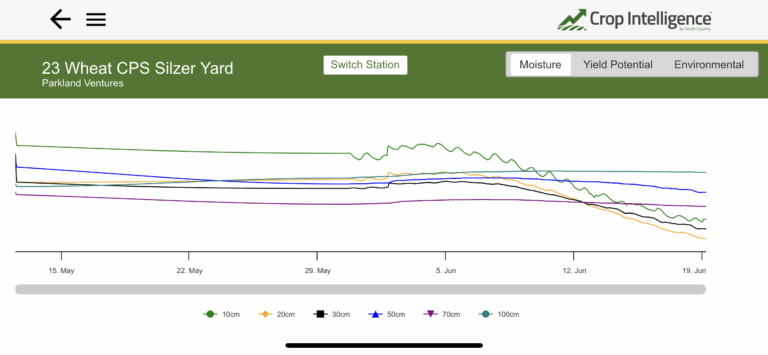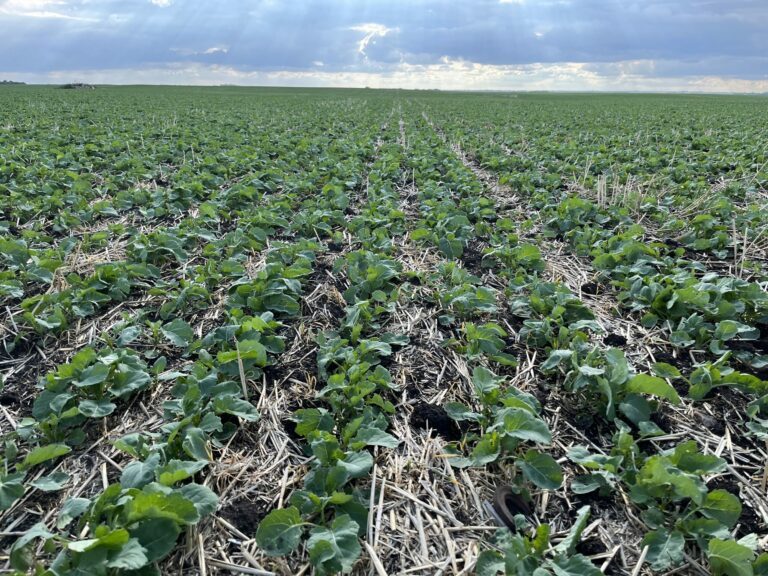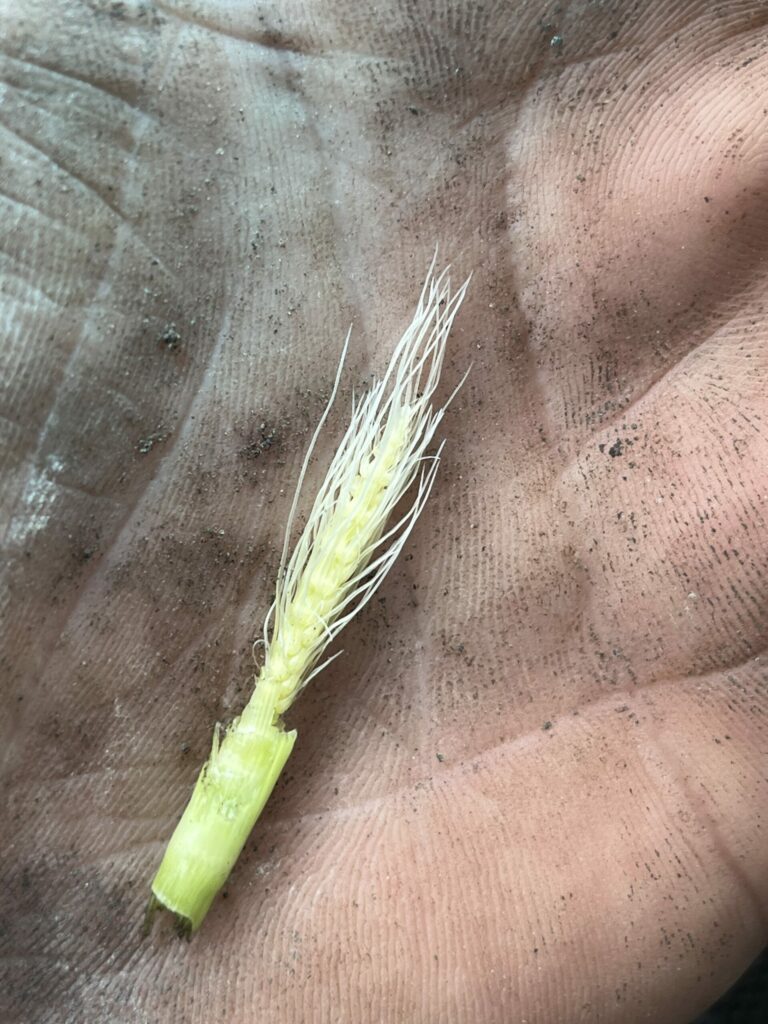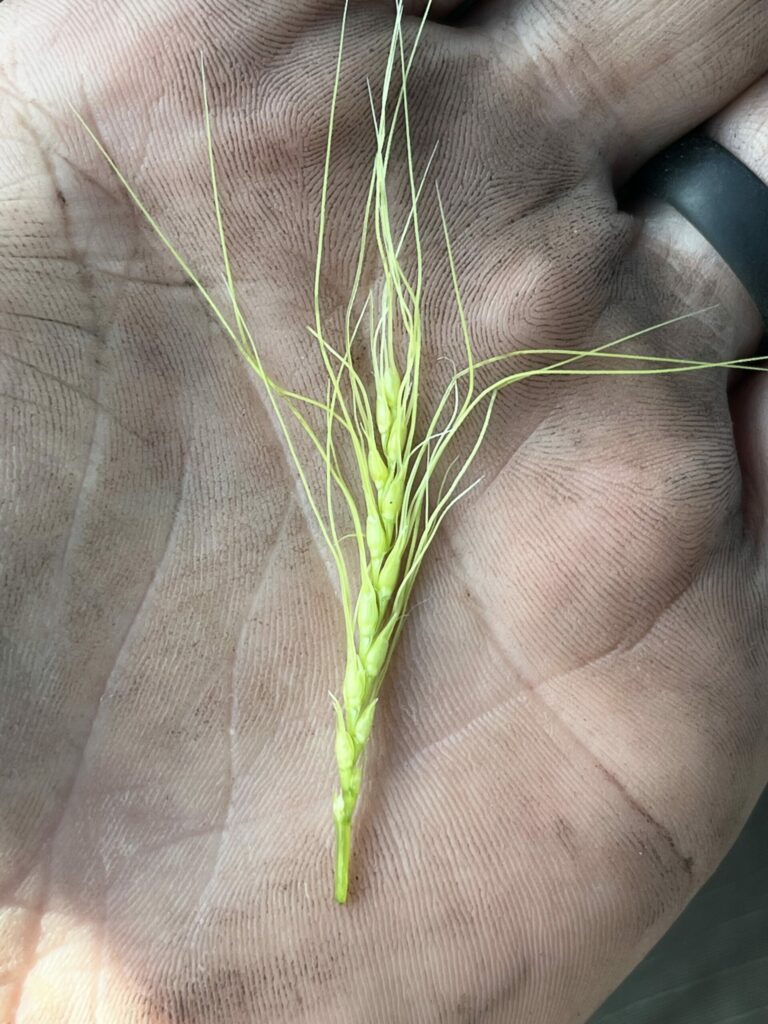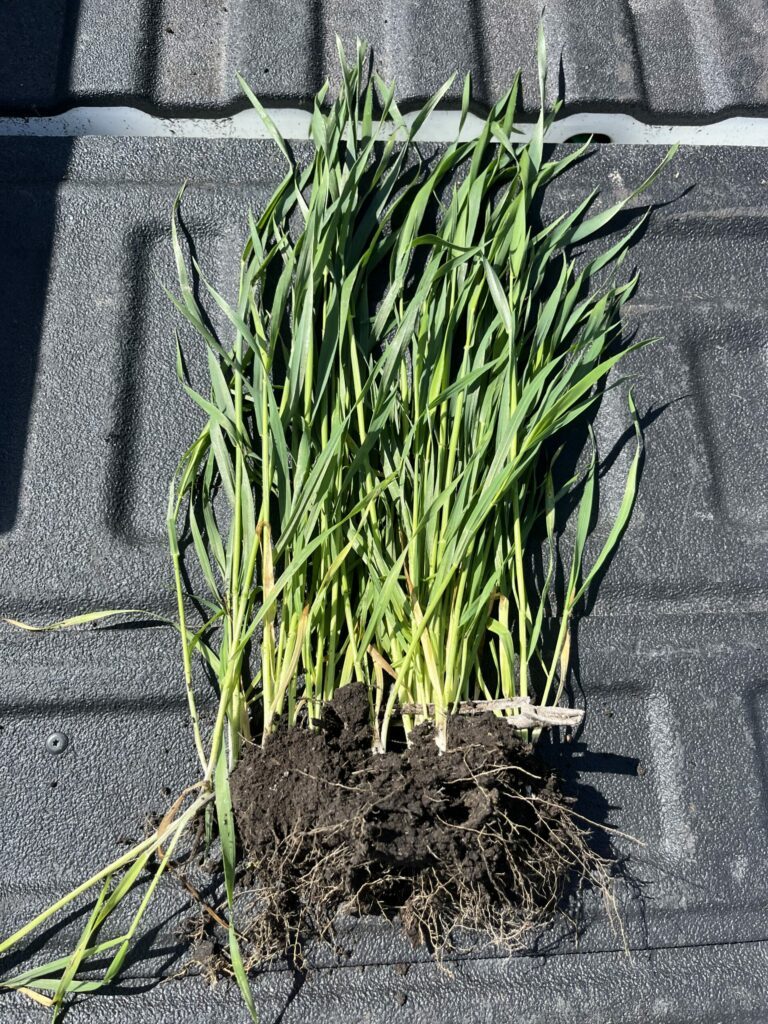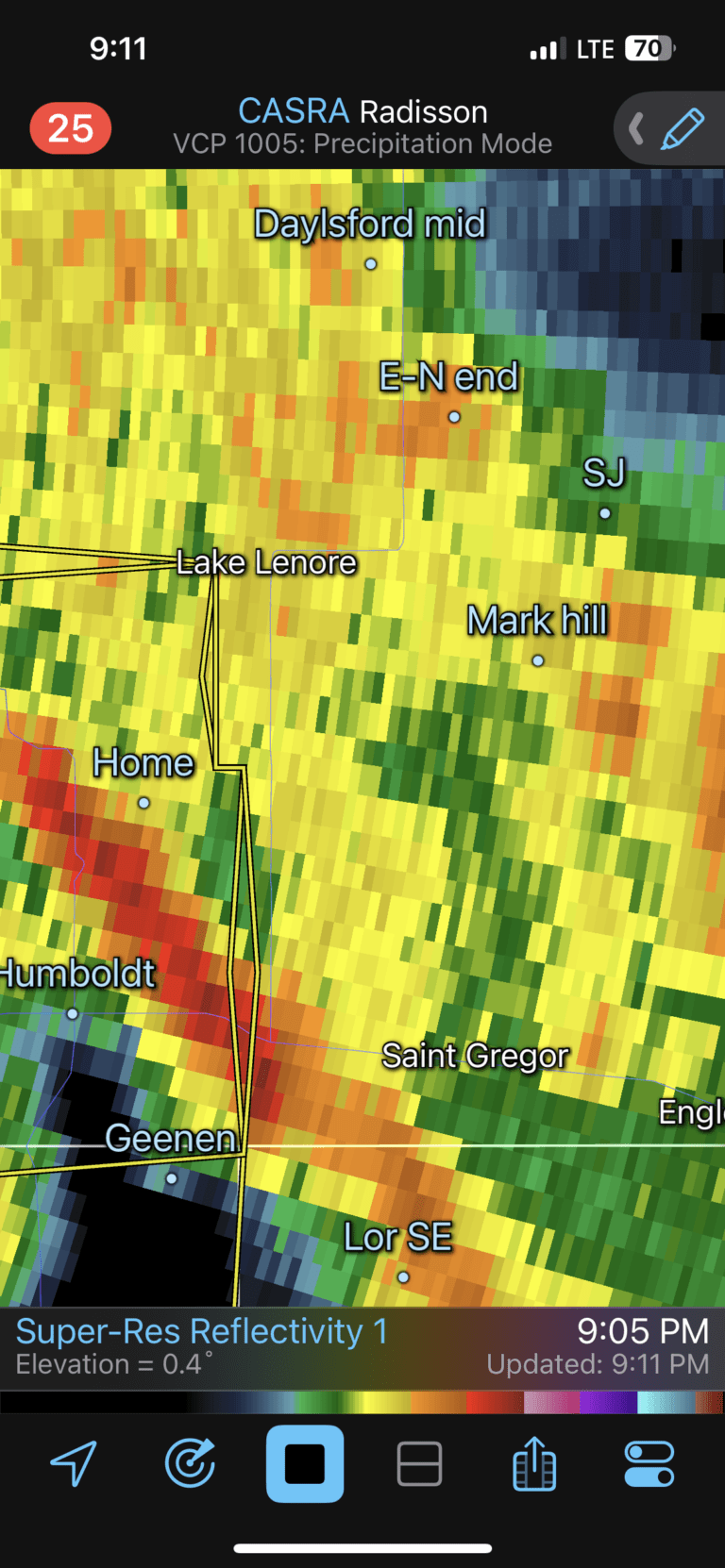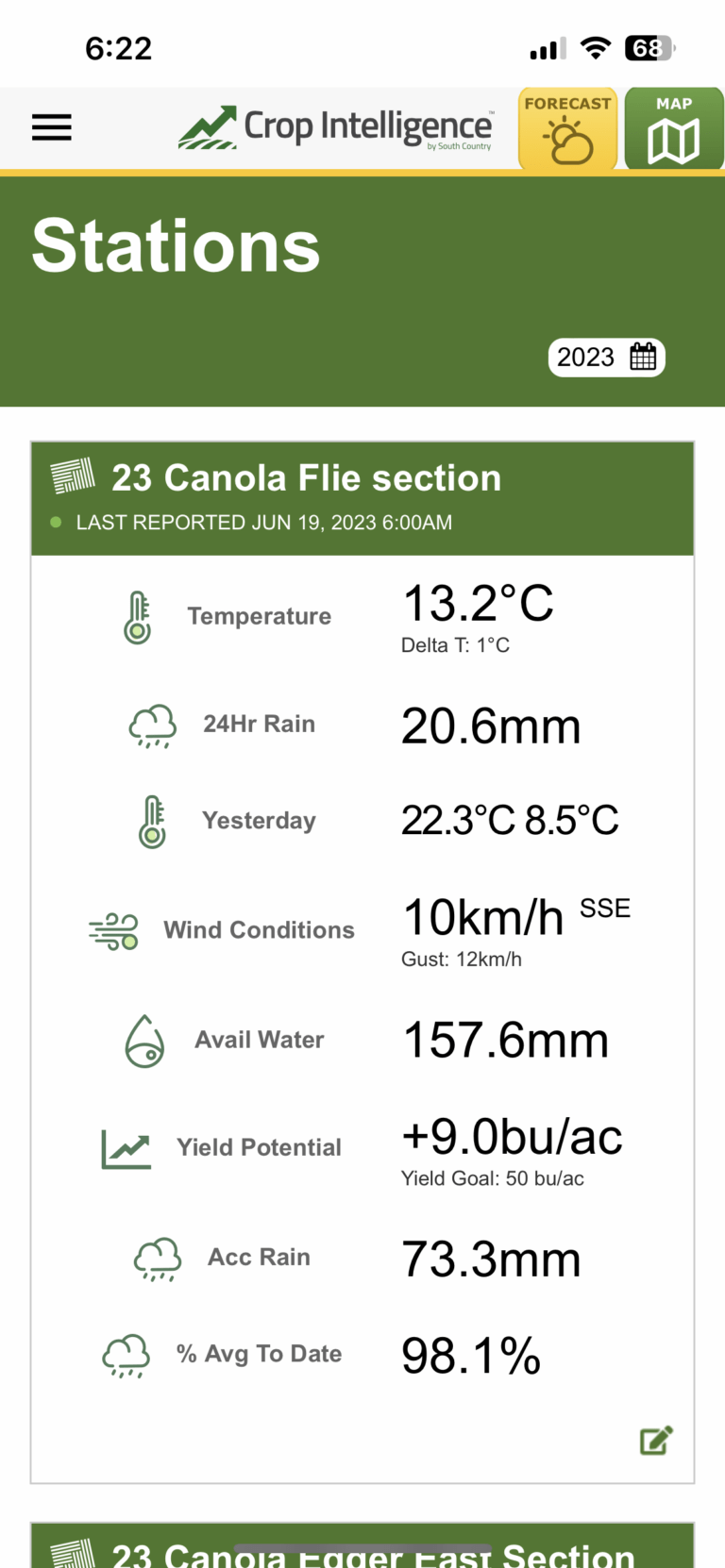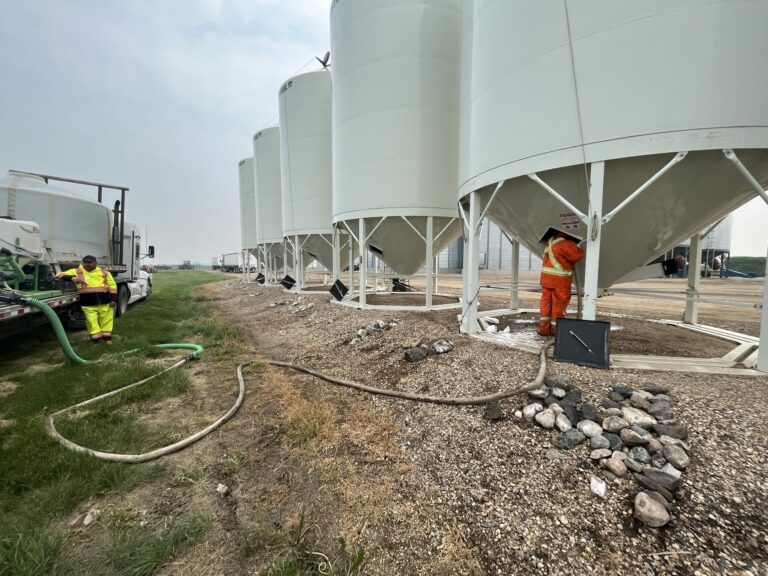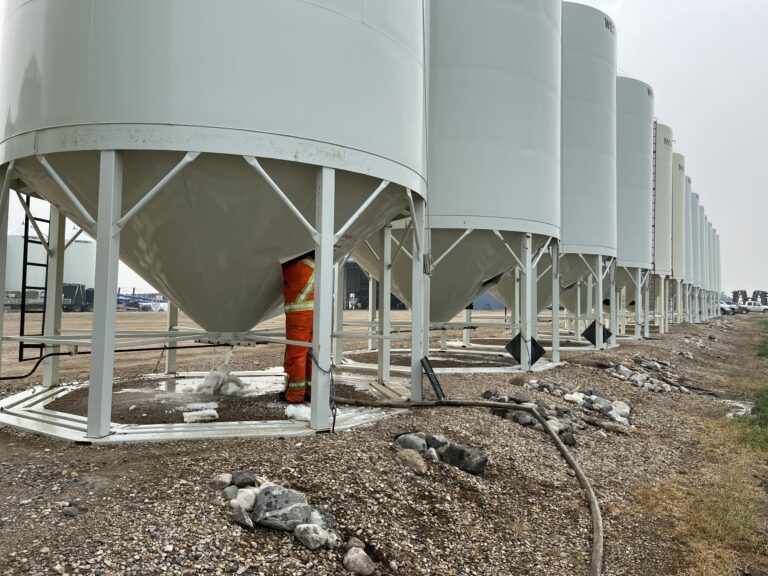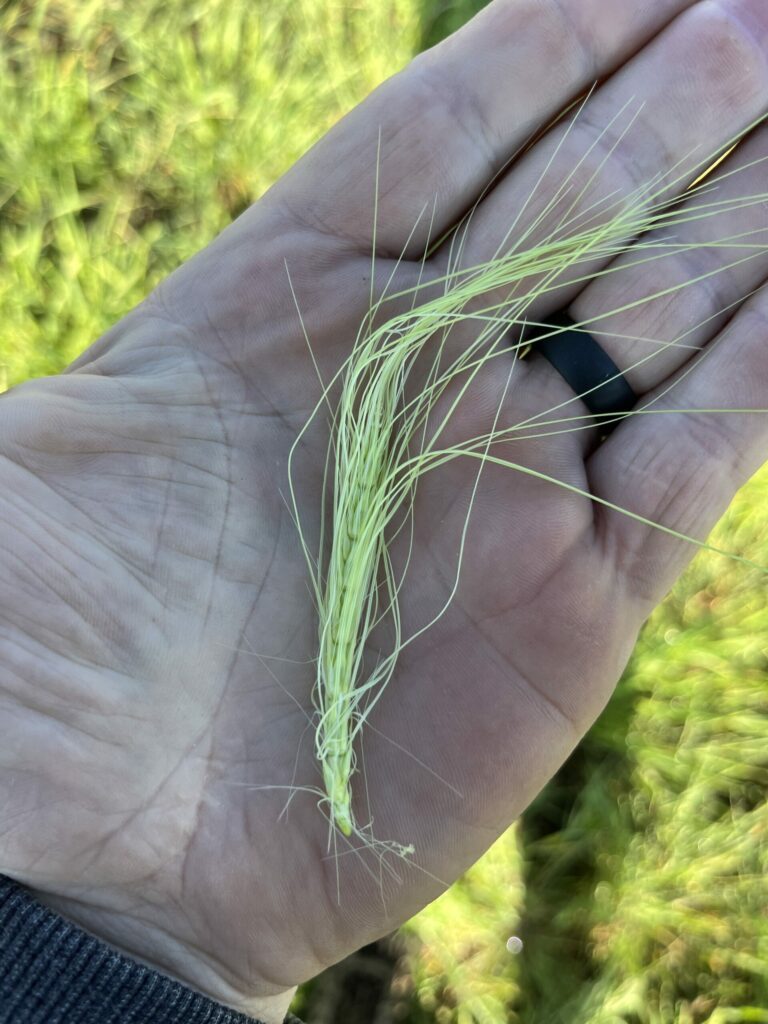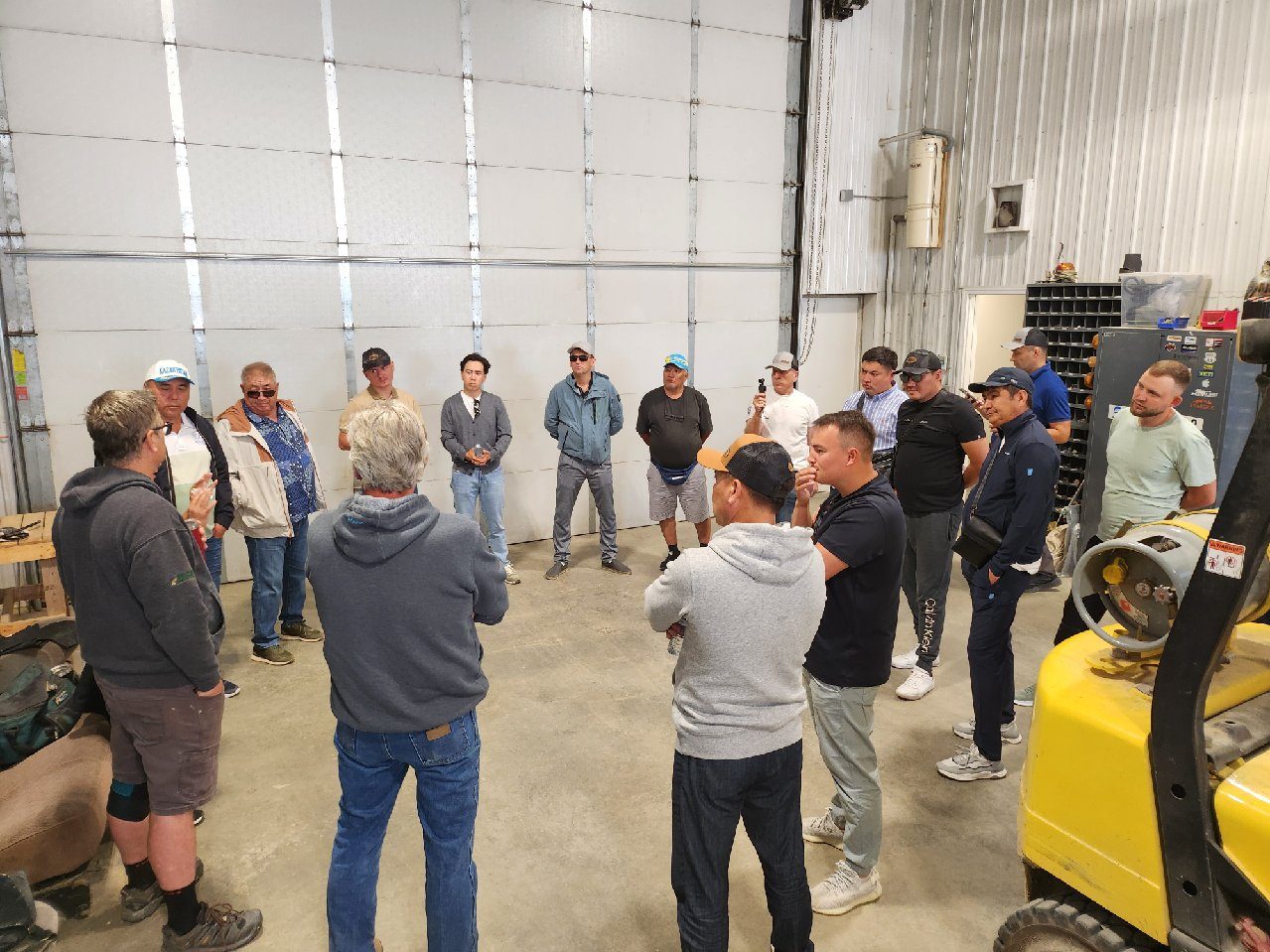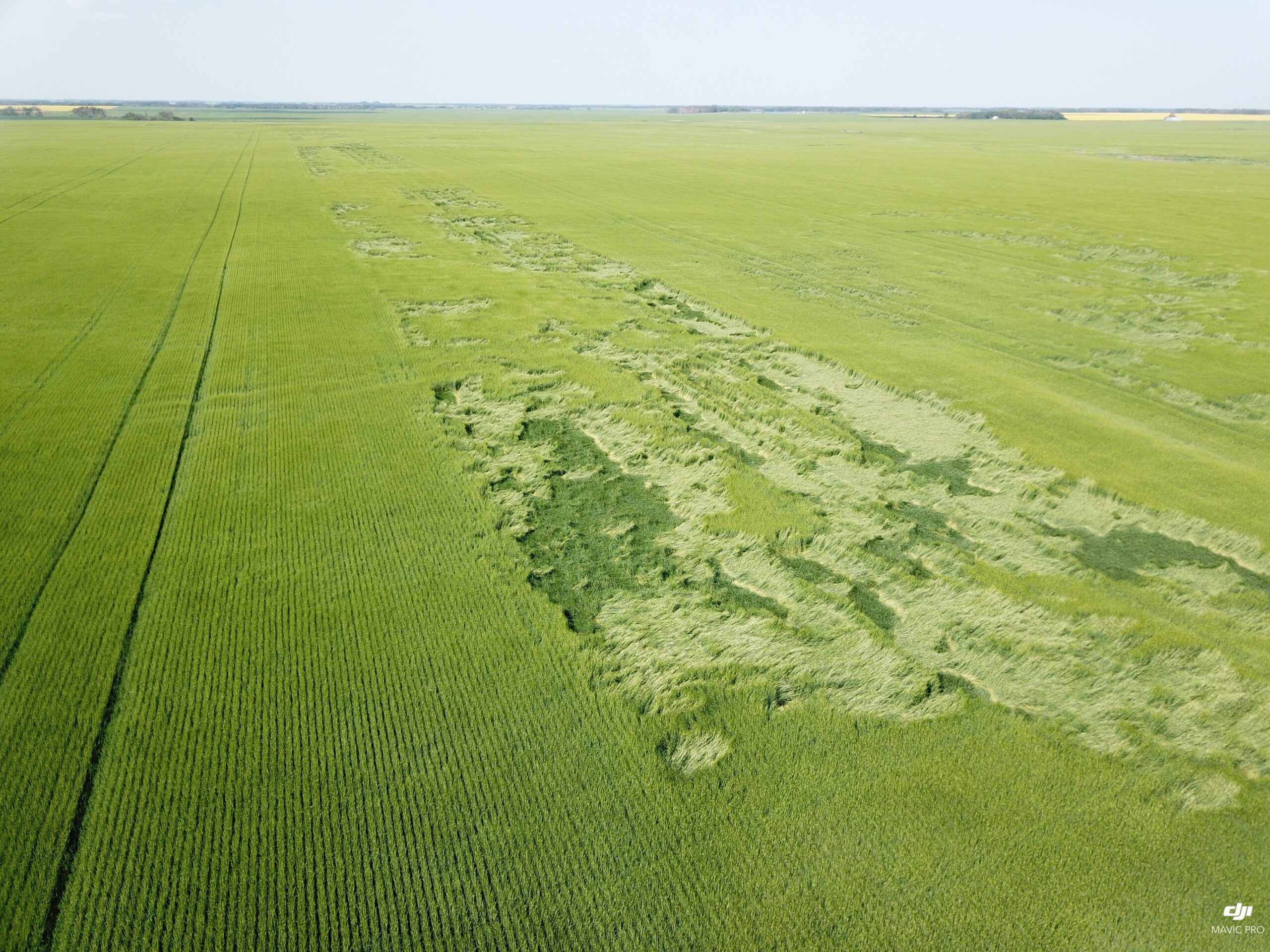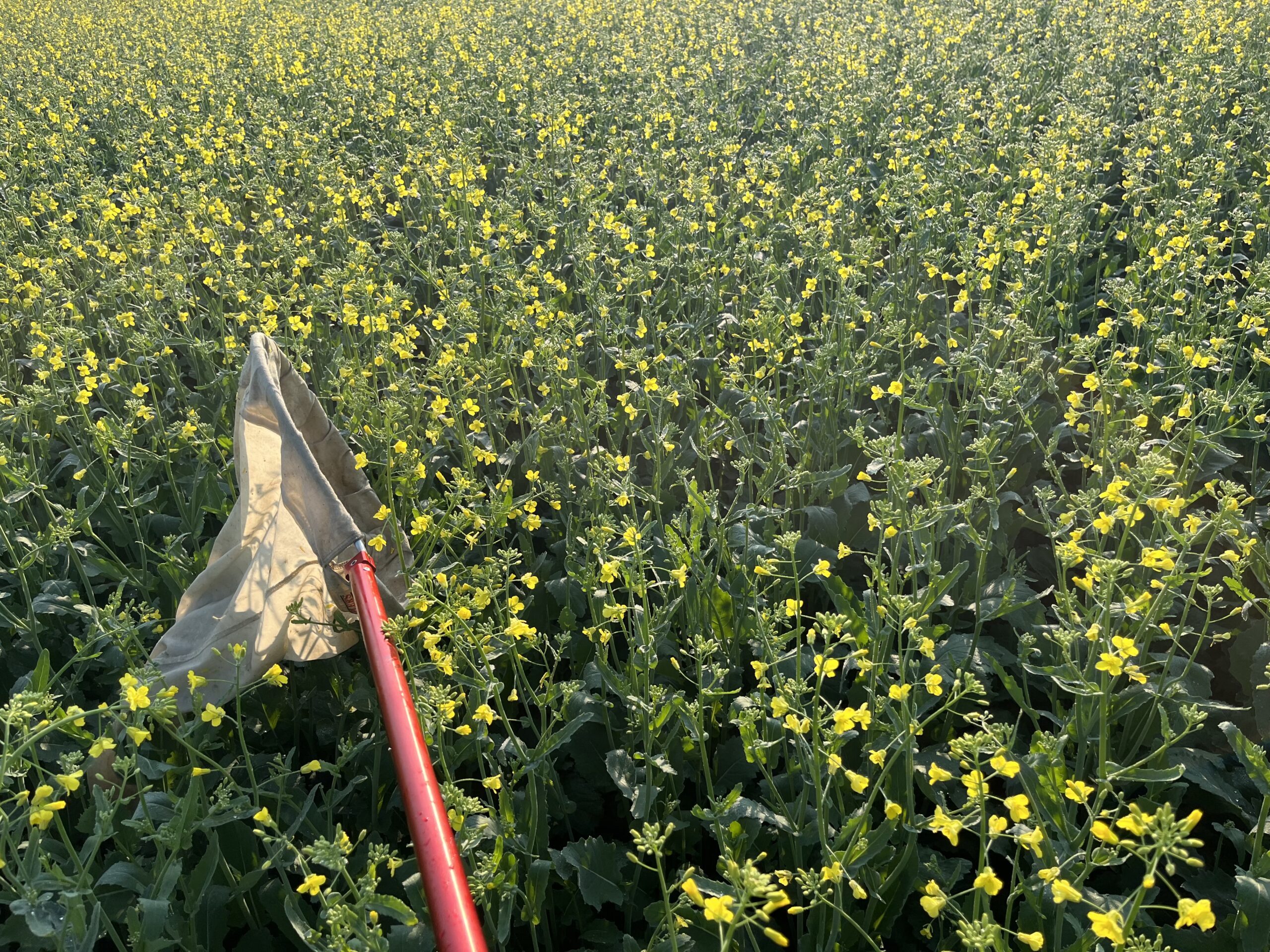We were fortunate to get some rain on Sunday night – it wasn’t uniform across the farm but we did get between 18-22mm in some of the driest areas, which are the south and central areas. Up north we missed most of it but we still got 8mm, which will help. Forecast is calling for little to no rain for the next 7-10 days, but it will also be cooler out, so that should help.
Crop staging is still earlier than normal – we are almost 3-3.5 weeks ahead of last year (which was later than normal) and closer to 1-1.5 weeks ahead of normal. Our first canola fields are usually starting to flower around the July 1st timeframe, this year our first canola was starting to flower on the 18th of June.
Fungicide spraying will be starting later this week or early next week at the latest. Wheat and barley is mostly at flag leaf, and the earlier canola fields are at about 15% bloom stage. We will be spraying all our wheat and barley at fusarium timing – for wheat that is when the first anthers appear on the fully emerged wheat head, and when half the head is exposed on barley (barley flowers while it is in the boot). We are unsure about how much canola we will be spraying. We will start with a few of the fields that look the strongest and have had more rain over the last couple weeks. The majority of our canola is up north, where it has been drier this last week to 10 days. With canola the biggest threat is sclerotinia and in order for that to be a problem you need the ground to stay moist so the apothecia (small mushroom-like structures) can germinate and run through their life cycle. A few rain events coupled with cooler temperatures can keep the soil moist for a long period of time – with the thick canola leaves they shelter the soil and keep it from drying out.
Our moisture probes are still showing decent levels of subsoil moisture, although they are starting to steadily drop. It is that time of year where the crop can look strong, but as the moisture levels drop off, you will start to lose yield. By the time you can see the stress in the field, yield loss has already started to occur. That is where these moisture probes are a good management tool, they help us make decisions earlier than you would otherwise be able to – such as fungicide application, marketing more or less new crop production, planning for bin space, etc.

